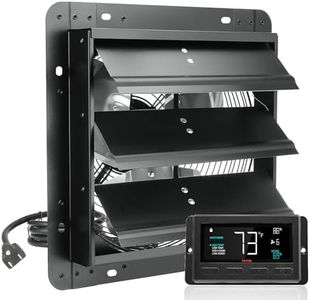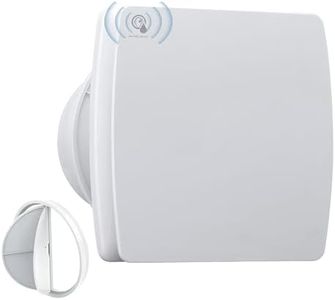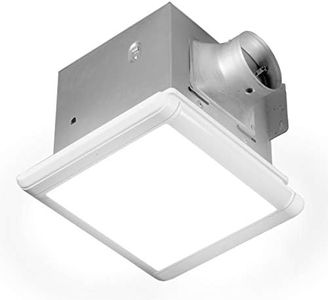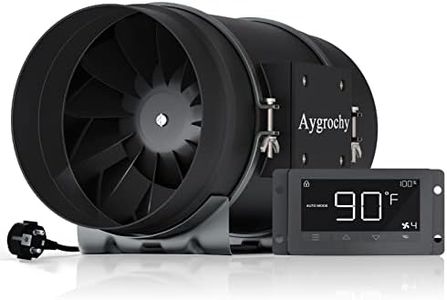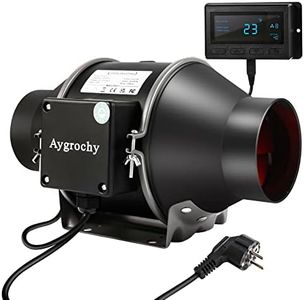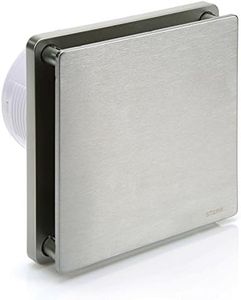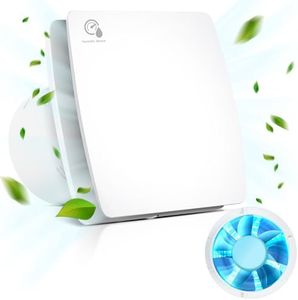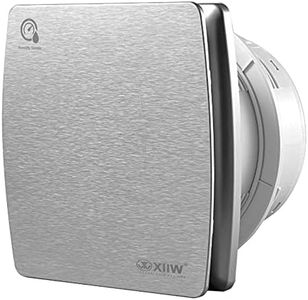We Use CookiesWe use cookies to enhance the security, performance,
functionality and for analytical and promotional activities. By continuing to browse this site you
are agreeing to our privacy policy
10 Best Exhaust Fan With Humidity Sensors
From leading brands and best sellers available on the web.Buying Guide for the Best Exhaust Fan With Humidity Sensors
Choosing an exhaust fan with a humidity sensor is a great way to keep your bathroom, kitchen, or laundry area free from excess moisture, which can cause mold, mildew, and unpleasant odors. The humidity sensor automates the fan, turning it on when moisture levels rise and off again when they're back to normal. To pick the best product for your needs, you'll want to understand the key features that affect performance, ease of use, and suitability for your space.Airflow Capacity (CFM)CFM stands for Cubic Feet per Minute and tells you how much air the fan can move. This spec is important because it shows whether the fan is powerful enough for your room size. Smaller rooms like bathrooms often need 50-80 CFM, while larger rooms or spaces with heavy moisture (like laundry rooms) might require 100 CFM or more. To choose the right one, match the CFM to your room size: for bathrooms, a common rule is 1 CFM per square foot of floor area.
Humidity Sensor SensitivityThis refers to how the fan's sensor detects and responds to changes in humidity. Sensitive sensors can activate the fan quickly as moisture increases, while less sensitive ones might react more slowly or only at higher humidity. Some fans let you adjust the humidity threshold—meaning you can set at what humidity percentage it turns on. If you want a hands-off solution, look for models with adjustable sensitivity so you can tailor it to your environment.
Noise Level (Sones)The noise level is measured in 'sones,' where lower numbers mean quieter operation, and higher numbers mean the fan is louder. This is important if you want a peaceful environment, especially in spaces like bathrooms where too much noise is unwelcome. Quiet fans are typically under 1.5 sones, medium are 1.5-3, and loud fans are over 3 sones. If tranquility matters to you, choose a fan with a low sone rating.
Installation TypeExhaust fans can be mounted in the ceiling or wall. The installation type matters because not all spaces can accommodate both, and installation complexity can vary. Before choosing, check where you can install it in your home—if there's attic access, ceiling models are common; otherwise, you might be limited to wall models. Pick an installation type that suits your space for easier set-up.
Energy EfficiencyEnergy efficiency indicates how much electricity the fan uses. Efficient models reduce power bills and are better for the environment. Look for products with energy-saving certifications (like ENERGY STAR). If your fan will run frequently, higher efficiency will save you more over time. If environmental impact and running costs are priorities, go for an energy-efficient model.
Manual override and timer featuresSome fans let you manually turn them on or off, override the sensor, or set a timer. This is useful if you need more control or want the fan to continue running after a shower or cooking. If you like setting your own schedule or want to ensure thorough ventilation, choose a fan with manual and timer options.
Size and designSize refers to the physical dimensions of the fan, while design includes how it looks (color, style, grille type). It's important the fan fits in the available opening and matches your room’s style. Measure your space carefully before buying, and consider whether you want a discreet or decorative fan based on your preference.

